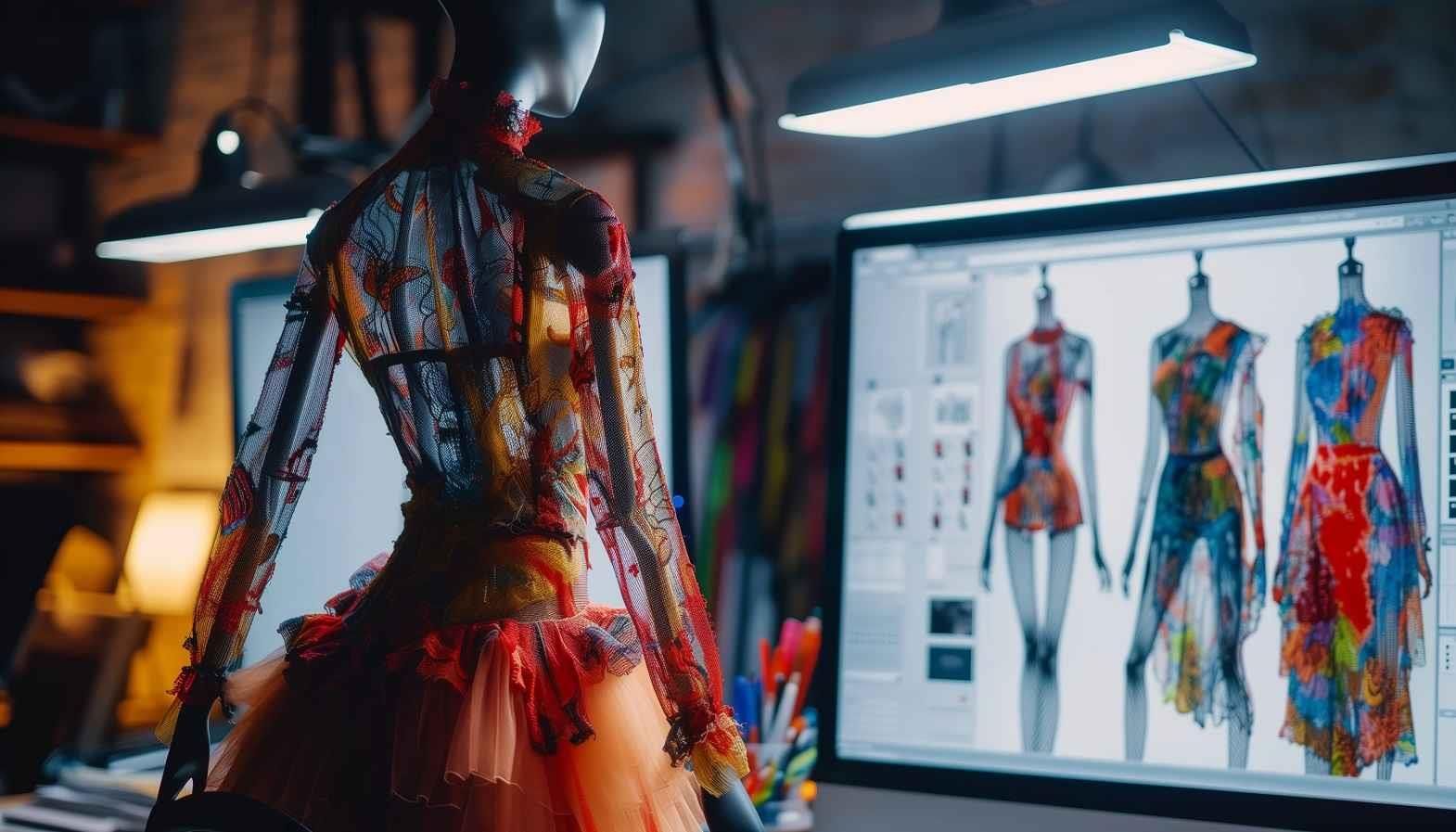The fashion industry, long celebrated for its creativity and innovation, is now embracing a new wave of transformation powered by Artificial Intelligence (AI). This technological revolution is reshaping the way fashion is designed, produced, marketed, and consumed. From personalised recommendations to virtual try-ons, AI is enhancing every facet of fashion styling, offering unprecedented levels of customisation, efficiency, and sustainability.
Personalised Recommendations: A Tailored Fashion Experience
One of the most significant impacts of AI in fashion styling is the ability to provide highly personalised recommendations. Traditionally, finding the perfect outfit involved time-consuming browsing through racks or scrolling through endless online listings. AI is changing this by analysing individual preferences, past purchases, and current trends to offer tailored suggestions.
Machine learning algorithms can process vast amounts of data to understand a customer’s style. For instance, if someone frequently buys bohemian-style dresses, the AI can suggest similar items, new arrivals in that category, or even complete outfits that match their taste. This level of personalisation not only enhances the shopping experience but also fosters customer loyalty by making each interaction feel uniquely catered.
Moreover, the integration of AI with mobile apps and online platforms has made fashion more accessible. Personalised recommendations can now be delivered directly to consumers’ devices, allowing them to shop conveniently and confidently from anywhere. This seamless integration of AI in shopping apps and websites creates a cohesive and enjoyable user experience, which is critical in the highly competitive fashion market.
Virtual Try-Ons: The Future of Shopping
The integration of Augmented Reality (AR) with AI has given rise to virtual fitting rooms, revolutionising the online shopping experience. These virtual try-ons enable customers to visualise how clothing will appear on them without the need to physically try them on. By using the camera on their device, customers can superimpose clothing items onto their image, providing a realistic view of fit and style.
This technology reduces the uncertainty associated with online shopping, leading to higher customer satisfaction and fewer returns. Companies like Zara and H&M are already incorporating virtual try-on features in their apps and websites, allowing shoppers to make more confident purchasing decisions.
Virtual try-ons also offer significant benefits for physical retail stores. Smart mirrors equipped with AR technology enable customers to try on multiple outfits virtually, reducing the need for physical fitting rooms and streamlining the shopping process. This not only enhances the customer experience but also optimises store space and resources.
Trend Prediction: Staying Ahead of the Curve
In the fast-paced world of fashion, staying ahead of trends is crucial. AI excels in analysing vast amounts of data from various sources, including social media, fashion shows, and retail sales, to predict upcoming trends. By identifying patterns and changes in consumer behaviour, AI can forecast what styles, colours, and designs will be popular in the near future.
Designers and retailers can leverage this predictive power to create collections that align with emerging trends, ensuring they stay relevant and competitive. This not only enhances the brand’s market position but also reduces the risk of producing items that may not sell well.
Additionally, AI-driven trend prediction can help fashion brands develop more targeted marketing strategies. By understanding which trends are gaining traction, brands can create more effective advertising campaigns and product launches that resonate with their target audience. This strategic approach ensures that marketing efforts are aligned with consumer preferences, maximising engagement and conversion rates.
Inventory Management: Optimising Resources
Efficient inventory management is a perennial challenge in the fashion industry. Overproduction and underproduction can both lead to significant financial losses. AI helps mitigate these risks by predicting which styles and sizes will be popular, enabling more accurate inventory planning.
By analysing sales data, market trends, and consumer preferences, AI can forecast demand and optimise stock levels. This results in fewer unsold items and reduced overstock situations, leading to more sustainable business practices and a better alignment of supply with actual demand.
Furthermore, AI-driven inventory management systems can enhance the supply chain’s efficiency. By predicting demand more accurately, brands can reduce lead times and improve production schedules. This not only minimises the risk of stockouts and overstock but also ensures that new collections reach the market in a timely manner, maintaining the brand’s relevance and competitiveness.
Design Assistance: Enhancing Creativity
AI is not just a tool for data analysis; it also plays a pivotal role in the creative process. AI-powered design tools can assist designers by offering suggestions based on current trends and historical data. For example, AI can generate new patterns or colour combinations, providing a source of inspiration for designers.
Moreover, AI can analyse past collections and market feedback to suggest improvements or new directions. This collaboration between human creativity and AI can lead to innovative designs that resonate with consumers, pushing the boundaries of fashion.
In addition, AI can streamline the design process by automating repetitive tasks, such as pattern creation and colour matching. This allows designers to focus on more complex and creative aspects of their work, ultimately enhancing the overall quality and originality of their collections. By leveraging AI as a creative partner, designers can explore new possibilities and push the limits of their artistic vision.
Customer Engagement: Building Stronger Relationships
In an era where customer engagement is paramount, AI-powered chatbots and virtual assistants are becoming essential tools for fashion brands. These digital assistants can provide styling advice, answer queries, and offer personalised recommendations, enhancing the overall shopping experience.
By being available 24/7, AI chatbots ensure that customers receive immediate assistance, which can significantly improve satisfaction and loyalty. Furthermore, these interactions generate valuable data that brands can use to refine their offerings and better understand their audience.
AI-powered customer engagement tools also enable brands to deliver more personalised and relevant content to their customers. For instance, AI can analyse customer behaviour and preferences to send targeted emails, notifications, and promotions that are tailored to individual interests. This level of personalisation not only enhances the shopping experience but also strengthens the emotional connection between the brand and its customers.
Customisation: The Rise of Personalised Fashion
AI is driving the trend of mass customisation, where consumers can personalise their clothing items. This goes beyond simple monogramming; AI enables customers to choose colours, fabrics, and fits that align with their individual preferences.
Brands like Nike and Adidas have embraced this trend, offering platforms where customers can design their own shoes. This level of customisation not only appeals to consumers’ desire for unique items but also enhances their emotional connection to the brand.
Moreover, AI-driven customisation platforms can provide real-time feedback on design choices, helping customers make informed decisions. For example, if a customer selects a particular colour combination, the AI can suggest complementary colours or highlight popular design trends. This interactive and personalised experience empowers customers to create products that truly reflect their personal style.
Sustainability: A Greener Future
Sustainability is a critical concern in the fashion industry, known for its significant environmental impact. AI is playing a crucial role in promoting sustainable practices by optimising resource use and reducing waste. Through better demand forecasting and inventory management, AI helps minimise overproduction, which is a major source of waste.
Additionally, AI can support recycling and upcycling efforts by identifying materials and garments suitable for these processes. By integrating sustainability into every stage of the fashion lifecycle, AI is helping the industry move towards a more environmentally friendly future.
AI can also enhance transparency in the supply chain, providing consumers with detailed information about the origins and production processes of their clothing. This increased transparency enables consumers to make more informed and ethical purchasing decisions, driving demand for sustainable and responsibly-produced fashion.
Conclusion
The integration of AI into fashion styling is revolutionising the industry, offering numerous benefits that enhance both the consumer experience and operational efficiency. Personalised recommendations, virtual try-ons, trend prediction, and efficient inventory management are just a few examples of how AI is transforming fashion. By fostering creativity, improving customer engagement, enabling customisation, and promoting sustainability, AI is not only shaping the future of fashion styling but also paving the way for a more innovative and responsible industry.
As AI continues to evolve, its impact on fashion will only grow, opening new possibilities and setting new standards for what is possible in the world of style. Embracing this technological revolution will be key for fashion brands looking to thrive in an increasingly digital and data-driven landscape.
Moreover, the collaboration between human creativity and AI technology holds the promise of creating a fashion industry that is not only more efficient and personalised but also more sustainable and inclusive. By harnessing the power of AI, fashion brands can build stronger connections with their customers, offer unique and tailored experiences, and contribute to a more sustainable future for the industry as a whole.









Comments